In the early evening hours of January 19, 1961, President-elect John F. Kennedy sat alone in the study of his soon-to-be vacated home in Georgetown, Virginia. In his lap, a loose-leaf notebook encased the Inaugural Address of the 35th President of the United States; even now, with the swearing-in ceremony less than 18 hours away, Kennedy continued to make minor changes and recited its words aloud, searching for the right cadence and proper emphasis to frame his words.
He was determined to introduce his presidency with a note of eloquence, but also of strength. The 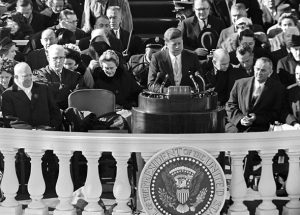 President-elect was a Cold Warrior, every bit as much as President Eisenhower, the five star general who was now about to give up the office of the presidency to the youngest man ever elected.
President-elect was a Cold Warrior, every bit as much as President Eisenhower, the five star general who was now about to give up the office of the presidency to the youngest man ever elected.
Kennedy wrote:
“Let every nation know, whether it wishes us well or ill, that we shall pay any price, bear any burden, meet any hardship, support any friend, oppose any foe to assure the survival and the success of liberty.”
In the winter of 1961, America’s decade-long Cold War with the Soviet Union could not have been more frigid. The two countries, with vast nuclear arsenals, maintained a never-ending death stare upon the other. Already, inter-continental missiles with programmed, pre-designated targets, guaranteed the annihilation of hundreds of U.S. and Soviet cities in a matter of minutes. In addition, heavy bombers in both countries maintained constant alerts. In the United States, hundreds of B-52 bombers, loaded with multiple hydrogen bomb payloads, stayed in the air 24 hours a day, flying to their fail-safe points near the Arctic Circle.
On that cold evening in Washington, Kennedy knew of the global risk but nothing of the particulars. Within an hour, five men would fulfill Kennedy’s pledge to “pay any price.”
Just past sunset, the crew of a B-52 Stratofortress, assigned to the 334th Bomb Squadron of the 95th Bomb Wing at Biggs Air Force Base, El Paso, Texas, took off on a planned eight hour, “round-robin,” 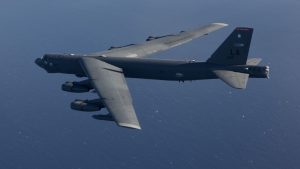 operational training mission. The flight was assigned the mission call sign, FELON 22. On board were: Capt. John P. Marsh (pilot), 1Lt. Thomas A. Stout (co-pilot), Capt. Harold S. Bonneville (radar navigator), 2Lt. Jerome R. Calvert (navigator), 1Lt. Ivan G. Petty (electronic warfare officer), Tsgt. David A. Forsythe (gunner), and Ssgt. Lionel A. Terry (flight engineer)
operational training mission. The flight was assigned the mission call sign, FELON 22. On board were: Capt. John P. Marsh (pilot), 1Lt. Thomas A. Stout (co-pilot), Capt. Harold S. Bonneville (radar navigator), 2Lt. Jerome R. Calvert (navigator), 1Lt. Ivan G. Petty (electronic warfare officer), Tsgt. David A. Forsythe (gunner), and Ssgt. Lionel A. Terry (flight engineer)
FELON 22 covered the length of New Mexico and entered Utah near the Four Corners. Its turnaround point, Bismark, South Dakota, was still three hours away when the big jet began to encounter heavy turbulence. The stiff winds buffeted FELON 22 and Capt. Marsh disengaged the auto-pilot. The plane drifted 23 miles east of its intended course and Marsh initiated a climb to 40,000 feet, hoping to find calmer air above. The crew was just north of Monticello, Utah.
On the ground, Gene Schafer had just walked out of his father’s house on 400 South in Monticello and was in the process of reaching for his car’s door handle, when he saw a flash. Schafer turned around and, in the next instant, “saw the whole sky light up like sunrise.”
Almost 80 miles north, just south of Crescent Junction, San Juan County Sheriff Max King was heading home from a convention in Salt Lake City. As he later told the San Juan Record, “I noticed a bright blue light in the sky south of me. I was sure it was no normal reflection, star or anything man-made. When the light exploded into a ball of fire, I called the Moab Sheriff’s office and asked if they had seen a ball of fire in the sky.”
They had not; in fact, very few people had seen the flash in this remote section of high desert, but it had surely happened. The B-52 had exploded in mid-air, ten miles north of Monticello. According to Air Force reports, FELON 22 “experienced a violent bump,” as it began its climb to 40,000 feet, “followed by a descending roll of about 410 degrees, a short period of wings-level, nose-down flight, and then a violent spin.” At an elevation of 7,000 feet, the plane broke apart. The left-wing engine caught fire and the entire plane erupted in flames. The main impact point was just off US Highway 160, near Church Rock, but the debris field was later determined to encompass an area two miles wide by more than 11 miles long.
Sheriff King ordered all available law enforcement personnel to the crash site. According to King, “Many local people who had seen the flash of light or heard the explosion, were already at the scene of the wreckage” when he arrived. One of them was Gene Schafer who had arrived at the crash site within 30 minutes of the explosion. “As I came down Peter’s Hill, you could see fires burning all over the hillsides,” Schafer recalled. “At the main impact site, the fire was real intense…it almost looked like burning phosphorus. A man, another bystander, was standing real close to it and I said, ‘You might want to step back from that.’ Just a couple minutes later, that fire exploded and spewed gobs of flame all over the place.”
The cockpit and most of the fuselage impacted near Church Rock and as the fire subsided, officials found the bodies of four crew members. Incredibly, three crew members had managed to jump free or eject from the disintegrating B-52 and open their parachutes.
Or was it only two? There was great confusion and uncertainty in the moments after the explosion. Two of the crew, 1Lt. Stout and 2Lt Calvert, reached the ground about a mile from the main impact site, in shock but with no other serious injuries, and made themselves known to Sheriff King. Both men insisted that they had seen a third parachute, but King wasn’t entirely convinced. But, “hearing conflicting stories as to the number of persons in the plane, seeing another chute, and taking into consideration that the two survivors might have seen each other instead of a third person parachuting to the ground, a search was made with around 150 men taking part until 2:45 a.m. Friday morning.” They found no one.
Four hours later, security officers from Hill Air Force Base arrived on the scene. Sheriff King offered his complete cooperation and the service of his volunteers in the search for the missing crew member, Ssgt Terry, but incredibly, the Air Force refused. Instead they ordered the civilian evacuation of a huge area surrounding the crash site. According to Sheriff King, “Security personnel knew construction of the aircraft and Sgt Terry’s position in the plane and they felt the odds were slim in him escaping alive. They expected to find the body in the wreckage.”
The Air Force was wrong. King and his volunteers reluctantly withdrew; local law enforcement continued to search from the air. The San Juan Record reported that, “Colonel Watts, Biggs Air Force Base, arrived shortly after 9 a.m. Friday. He said they were not sure if the plane carried any weapons, classified material or anything that might bring harm to onlookers or be a detriment to security if they got into the wrong hands.”
An Air Force examination of the wreckage indicated that, “the plane was equipped with five ejectors and only two had been fired…The Air Force men felt sure it would be impossible for the man to get out under his own power.”
Finally, on Saturday morning, January 21, 1961, local search parties were allowed to enter the crash area again. Within an hour, they found the body of the missing man—Sgt. Lionel T. Terry, 25, had indeed survived the mid-air explosion, had parachuted to safety, but died of exposure. “Time of his death was not known,” according to the Record, “but reports say his body was still warm and it was felt he had not been dead more than a few hours…(his) body was nearly hidden under the low branches of a tree and could only be seen from a short distance and from the right direction. His parachute was in a small bundle near the body, indicating that he had pulled it together in an effort to keep warm.” Sheriff King noted that members of his original late-night search party “came within 150 yards and three persons came within 50 yards of where the body was later found.”
For weeks afterward, the Air Force meticulously removed the wreckage. For locals, in the aftermath of the crash, expressions of anger and frustration were heard frequently, especially among those involved in the search. Why had the Air Force kept them out? Sgt. Terry’s body had been discovered less than a mile and a half from the crash. Clearly he was alive and conscious when he reached the ground. He could have been saved had it not been for the military restrictions.
Speculation focused on FELON 22’s payload. Although the flight was called a “training mission,” could the B-52 have been equipped with nuclear weapons? And how could Colonel Watts, who arrived from Biggs Air Force Base within 12 hours of the crash, have been uncertain of possible on-board weapons? Is that why the area was closed? To search for a missing hydrogen bomb?
The Air Force steadfastly denied that any nuclear weapons were on board FELON 22. For decades, the rumors of hydrogen bombs were no more than that. But in 1992, The Deseret News conducted a probe of the crash, after a Senate study “listed the Monticello crash site as one of 29 possible nuclear ‘weapons accidents’ sites nationwide.” According to the Deseret News, “A deputy assistant secretary of defense then testified that 29 accidents had indeed actually involved bombs, but did not verify they happened at exactly the 29 sites listed in the Senate study. The official later scheduled but canceled interviews to clarify whether a bomb was aboard in the Utah accident.”
Four years later, an inquiry from a Monticello resident to the Air Force drew a brief reply: “The information we obtained from several Air Force Safety Agencies confirmed that an aircraft crashed in the time frame mentioned in your letter; however, they assured us that no nuclear weapons were ever aboard the aircraft.”
Today, little wreckage remains at the main crash site, which I found just a few months ago. Three miles south, a part of the wing survives, almost intact. For years, at the impact point, jet fuel stained the adjacent sandstone butte, but wind and rain and the passage have time have finally worn it away. But if you look closely enough, small twisted pieces of aluminum and fiber-glass litter the sage brush. And bits of broken black glass, from what was once the cockpit instrument display panel still survive. Some of the glass reveals letters and numbers that once gave vital flight data to the crew of FELON 22. Now they’re incomplete and unreadable–all but one tiny fragment.
As I kicked a crumpled piece aluminum with my foot, I saw a small glass shard, less than an inch across. One word was clearly visible. It said: FIRE.
Jim Stiles is Founder and Co-Publisher of the Canyon Country Zephyr.

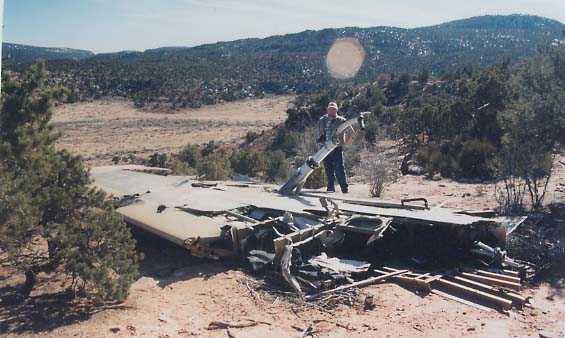
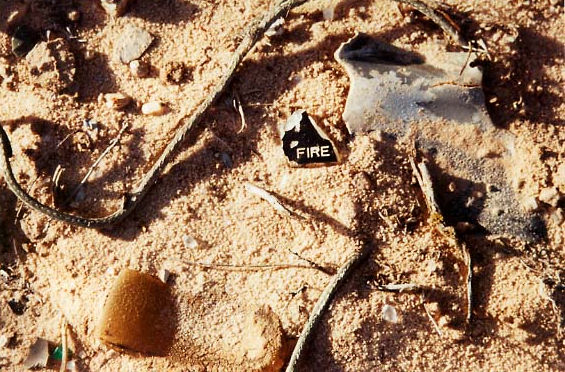





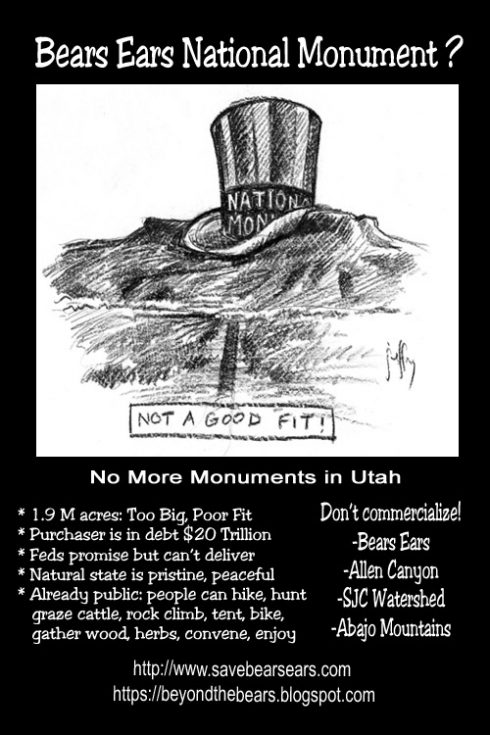
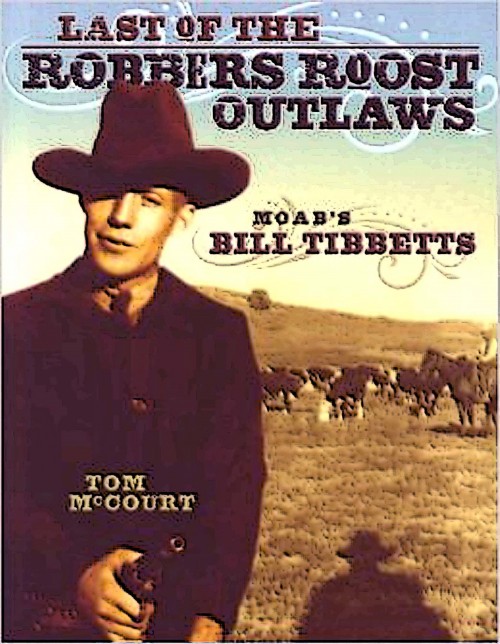


On the day of the accident, the high school bus traveling to La Sal had engine problems just past the Indian Creek turn off and had to pull over. We set there for about a half hour while the engine cooled down and then traveled on to La Sal Junction for repairs. Some of us boys were standing beside the bus when the bomber exploded. We watched three large pieces of flaming debris and a lot of small ones fall from the sky. The following morning we saw that one large piece had landed not far from where we had stopped. It was still burning.
I wish we had been there to verify the third chute.
I was a B-52 aircraft commander in the same squadron at Biggs, knew the crew and know for an absolute fact that there were no nukes aboard. The actual cause of the crash was vertical fin separation due to extreme turbulence.
You can read about this and all other early Cold War B-52 accidents in my book, Jet Age Man.
that shard could be from any number of instruments or controls pertaining to emergency operations, and not (as i assume you meant to imply) a weapons control.
I had someone tell me that county workers dug a huge hole and buried a large portion of the plane in it somewhere around Church Rock. I tried to get him to tell me exactly where but he refused to tell me. I may have been pulling my leg.
Thank you for the story. My family and I now have an adventure planned for this weekend. I read more about this and feel sad for the man who froze. His parents never stopped trying to get answers.
I was in Monticello when the B-52 exploded. It was a cold evening, with the sun having just set. I did not see the explosion but saw the chaff falling. My dad and I went out to near Church Rock and saw where some of the fuselage had crashed. Some of it was still burning. We volunteered to help search for the missing 3rd person and hiked from the burning site back south, looking for debris and the man. It was a dark cold night and hard to see anything. I recall seeing a part of the burning fuselage and being told that there were bodies in the wreckage at the base of the rock and a big burn scar was on the side slope (visible for years afterward). Some of the wreckage, including some landing gear was in the flat south of the burning wreck. A number of people were out looking on foot and several 4 wheel drive vehicles were involved as well. We had flash lights but that did not help much. After we searched for 2 – 3 hours we were cold, had found nothing of value and some distance from where we started so we hopped on the back of one of the trucks and rode back to the road, and drove home. All this before the military showed up the next morning, banning further searches for the missing airman. Somehow I never worried about there being a nuclear device on board. I have heard others spread rumors but the two that survived, in the Monticello Hospital had told the nurses (Mom was a nurse) that no bombs were aboard.